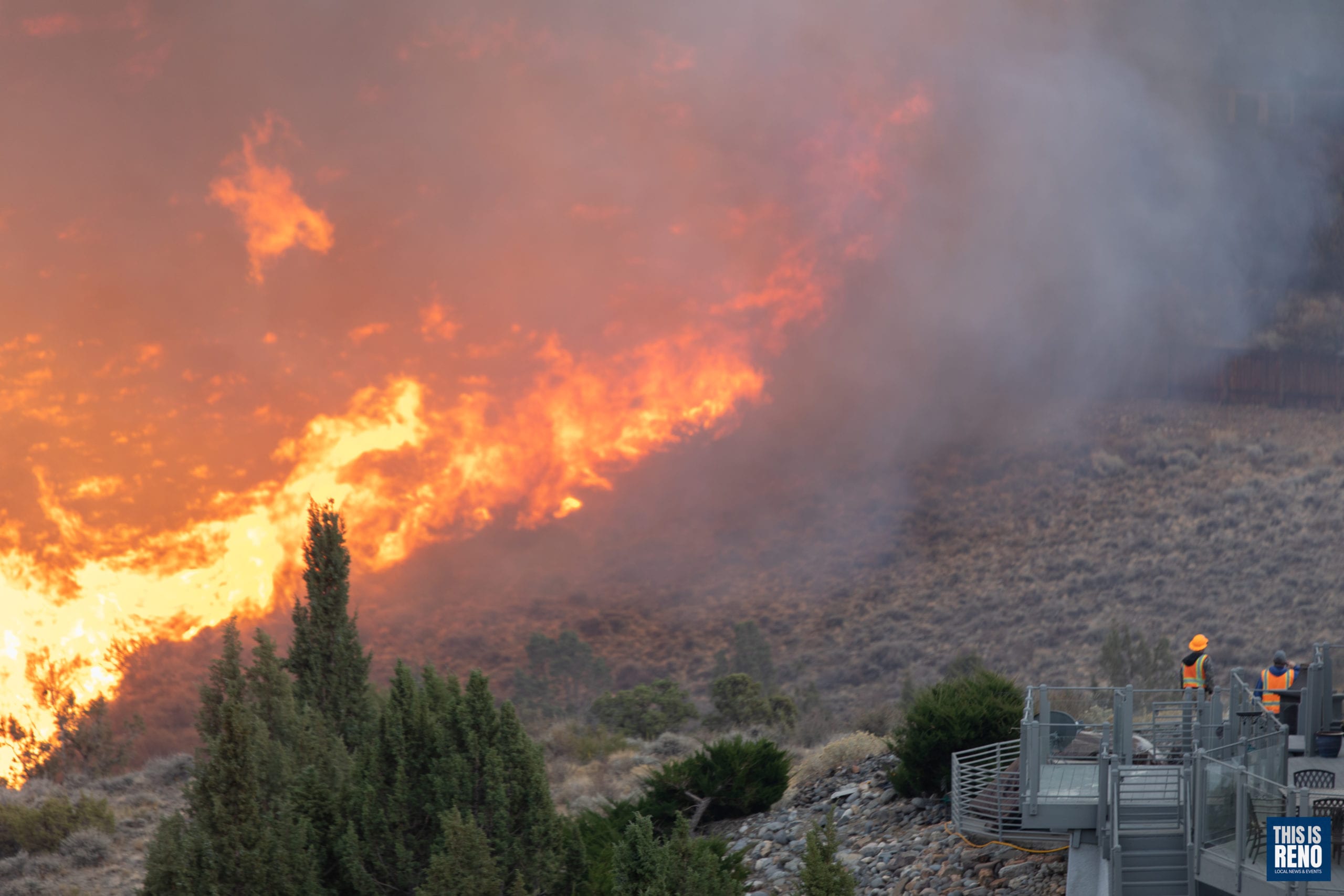Last year’s Pinehaven Fire drew attention to the fire threats some homeowners face due combustible materials near their homes. After investigating the cause of the fire, Reno Fire Department officials said they were working on programs to help reduce the impacts of such fires. One such program has arrived.
Starting March 20, and continuing through September, RFD’s Reno Home Wildland Fuels Reduction Program will provide dumpsters at area fire stations and neighborhoods for homeowners to dispose of vegetation cleared from around their homes to create defensible space.
“As we have seen with the Pinehaven and Caughlin fires, embers from a wildfire can travel great distances before landing on combustible vegetation in your yard,” the RFD said in a statement.
The program is funded by grants from the Federal Emergency Management Agency and Waste Management.
Communities whose homes border the wildland urban interface—the spaces where development meets wildland areas—are a priority for the program. Clearing defensible space in these areas is critical to reducing the threat and effects of a wildland fire, the RFD said in a statement.
Officials said the dumpsters will be only for disposal of yard waste—such as dried leaves, weeds and brush, junipers and other similar materials. Furniture, appliances, construction materials, hazardous materials and chemicals are not allowed in the dumpsters.
The first dumpster days are:
- Saturday, March 20 at Fire Station 3, 580 W. Moana Ln., from 9 a.m. until 3 p.m. or until the dumpsters are full.
- Sunday, March 28 at Fire Station 11, 7105 Mae Anne Dr., from 9 a.m. until 3 p.m. or until the dumpsters are full.
Starting April 2, and continuing through Sept. 26, homeowners living near the wildland urban interface may qualify for a no-cost 30-yard dumpster for their community to help in clearing defensible space around homes. The City of Reno will deliver the dumpster on Thursday and haul away the dumpster filled with dead vegetation and overgrowth on Monday.
To check for dumpster availability, call RFD’s main office at 775-334-2300 or submit an application online.
Tips for creating defensible space
RFD also provided a list of tips to create defensible space—30 to 100 feet around a home, depending on the vegetation and whether the property is on a slope. Experts also stressed that a fire break around a home doesn’t have to be barren. Fire resistive plantings, lawns and landscape features can be used to reduce the risk of fire.
0 feet to 5 feet from your home
- The Immediate Zone is closest to your house and the most vulnerable.
- Remove any combustible outdoor furniture. Replace jute or fiber door mats with fire resistant materials.
- Remove or relocate all combustible materials, including garbage and recycling containers, lumber and trash
- Clean all fallen leaves and needles regularly. Repeat often during fire season.
- Remove tree limbs that extend into this zone. We recommended no combustible vegetation within five feet of structures.
- Do not store firewood, lumber or combustibles under decks or overhangs.
- Use only inorganic, non-combustible mulches such as stone or gravel.
5 feet to 30 feet from your home
- The Intermediate Zone may include buildings, structures, decks, etc.
- Keep this area “Lean, Clean, and Green.”
- Remove dead plants, dead grass, dry leaves and pine needles from your yard, roof and rain gutters.
- Trim trees regularly to keep branches a minimum of 10 feet from other trees.
- Remove branches that hang over your roof, and keep dead branches 10 feet away from your chimney.
- Relocate piles of wood or debris 30 feet from any structures.
- Remove vegetation and items that could catch fire from around and under decks.
30 feet to 100 feet from your home
- The Extended Zone may even include space more than 100 feet if you live on a steep south-facing slope.
- Cut or mow annual grass down to a maximum height of four inches.
- Try not to allow fallen needles and leaves to exceed a depth of three inches.
Source: Reno Fire Department


